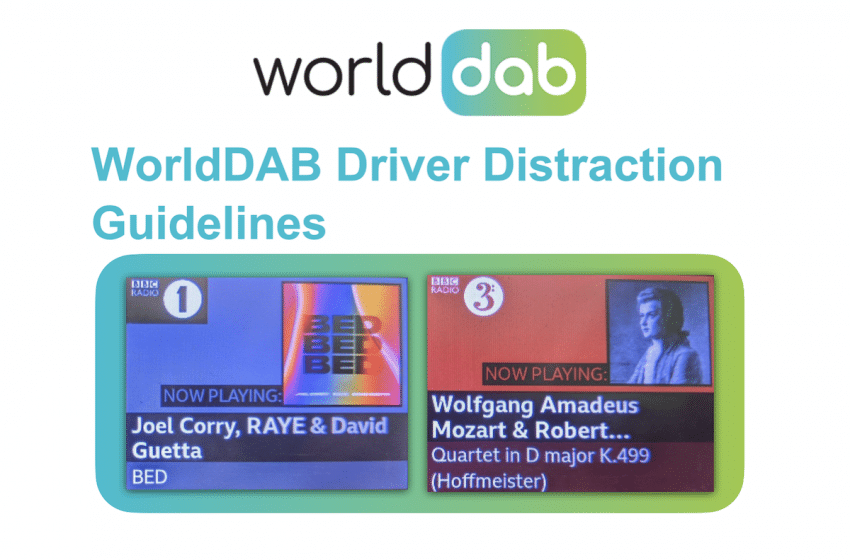
One of the criticisms of increased visual content on in-car audio interfaces is the risk of driver distraction. WorldDAB — the global industry forum for DAB digital radio — has released detailed guidelines for automotive manufacturers and digital radio broadcasters to ensure that visuals and text produced for in-vehicle screens minimize any potential distraction for the driver.
The new driver distraction guidelines are steered by expert input from both the automotive and broadcast sectors to ensure displays are safe for drivers while still providing the information listeners expect to see on their digital radio display.
The guidelines are critical given that broadcast radio continues to dominate as the most preferred source of in-car entertainment across the globe, according to the recent Car Buyers Survey. The international study found that the “most desired radio features include voice controls and content information,” with 90% of respondents saying that broadcast radio should be standard in every vehicle.
The four key areas
The guidelines cover four key areas for in-vehicle visuals: legibility, relevance, frequency and local legislation. They also offer example visuals that can help in designing images for the car and operational considerations to prevent updates and display functionality from becoming distracting for drivers.
An important section in these guidelines includes the refresh rate for slides set at the industry standard of “not more frequently than every 20 seconds.” The guidelines also highlight the importance of trigger time to broadcasters, noting that “producing and transmitting visuals is expensive, so commercial broadcasters need to sell visualization (text and images) of audio advertising to meet their business case. They can only do that if the display of content to drivers is accurately timed and consistently visible.”
WorldDAB will present the guidelines at WorldDAB Automotive 2022 in London on June 22. The event brings together leading experts from the digital radio and vehicle manufacturing industries and highlights how they work together to design the best audio experience for drivers.
You can download the guidelines here.




















